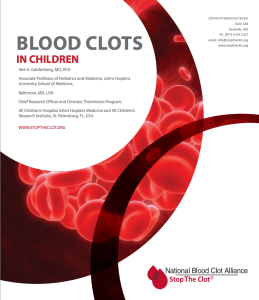What are the signs and symptoms of DVT/PE in children?
DVT/PE in young people can happen in a variety of areas of the body. Signs and symptoms can depend on the location as well as on the amount of blockage of blood flow through the vein.
- DVT in the leg or arm usually causes painful swelling of the leg or arm, where a part of the leg or arm becomes noticeably larger than the same area on the opposite leg or arm.
- PE (“pulmonary embolism,” a blood clot in the arteries of the lung, which often has come from a blood clot that broke loose from a DVT of the leg or arm and traveled back to the heart and into the lungs) can cause shortness of breath and chest pain that worsens with deep breathing.
- CSVT (“cerebral sinovenous thrombosis,” a blood clot in the deep cerebral veins that bring blood toward the heart from the head) can cause severe or prolonged headaches. People who severe headaches caused by CSVT may also have blurred vision, and their headaches may feel worse after lying down for several hours.
Neil A. Goldenberg, MD, PhD
Professor of Pediatrics and Medicine, Johns Hopkins University School of Medicine,
Baltimore, MD, USA
Founding Director, Pediatric Thrombosis & Stroke Programs
Johns Hopkins All Children’s Hospital
St. Petersburg, FL, USA
Updated: September 2024





